In order to view this website correctly, you will need to have JavaScript enabled in your browser.
Skip to main content.
- Travel Trade & Press
- School Trips
- Business Events
GO TOKYO The Official Tokyo Travel Guide
New & Now
Tokyo Area Guide
Things to Do
Plan Your Trip
- Choose Language 日本語 ENGLISH 中文(简体) 中文(繁體/正體) 한글 ภาษาไทย DEUTSCH ITALIANO ESPAÑOL FRANÇAIS
Share this page
- X (Twitter)
- My Favorites
- All New & Now options
- New & Trending
- Spring Guide
- Summer Guide
- Autumn Guide
- Winter Guide
- Places The Locals Go
Stories & Guides
- Another Tokyo
- All Things to Do
- Attractions
- Food & Drink
- Onsen & Bathhouses
- Art & Design
- Anime & Manga
- Time Trip Tokyo
- Walks & Tours
- Tokyo Event Calendar
- All Tips to Plan Your Trip
- Accommodations
- Getting to Tokyo
- Getting Around
- Airport & Cruise Terminal Access
- Customs & Manners
- Weather & Geography
- Visa & Immigration
- Tokyo at a Discount
- Tours of Tokyo
- TOKYO Brochures
- PDF Maps & Guides
- Tourist Information Centers
- Online Tourist Guide
My Tokyo Guide
See something interesting? Click on the heart button in the article to add a page from this site to My Favorites.
Popular Keywords
- Guide Service
Advanced Search
- From open calendar
- To open calendar
- All Stories & Guides
Select Language
- ESPAÑOL
- FRANÇAIS

- A guide to the Tokyo Imperial Palace: history & how to tour
Main content starts here.
Updated: October 28, 2020
Tokyo Imperial Palace and its beautiful gardens are a world away from the hustle bustle of the city. Just a 10-minute walk from Tokyo Station and the high-rise Marunouchi financial district, this calm green oasis covers an impressive 1.15 square kilometres in the central Chiyoda Ward. Built on the site of the former Edo Castle, the palace became the permanent home of the Imperial Family in 1869. While you can’t go inside, except on rare special occasions that let you glimpse the interior, the surrounding manicured lawns, topiary trees and meticulously maintained gardens are not only visually enchanting but give a good idea of what being royalty is all about.

Edo Castle turned Imperial Palace
For over 250 years, Japan was ruled by the Tokugawa shogun during what was known as the Edo Period – Edo being the old name for Tokyo. The current Imperial Palace, known as Kokyo in Japanese, sits on the former site of Edo Castle. However, in 1868, the shogunate was overthrown, and Japan’s capital was moved from Kyoto to Tokyo, with the Imperial Residence moving with it. The palace was destroyed during the Second World War but rebuilt in a similar style afterwards.
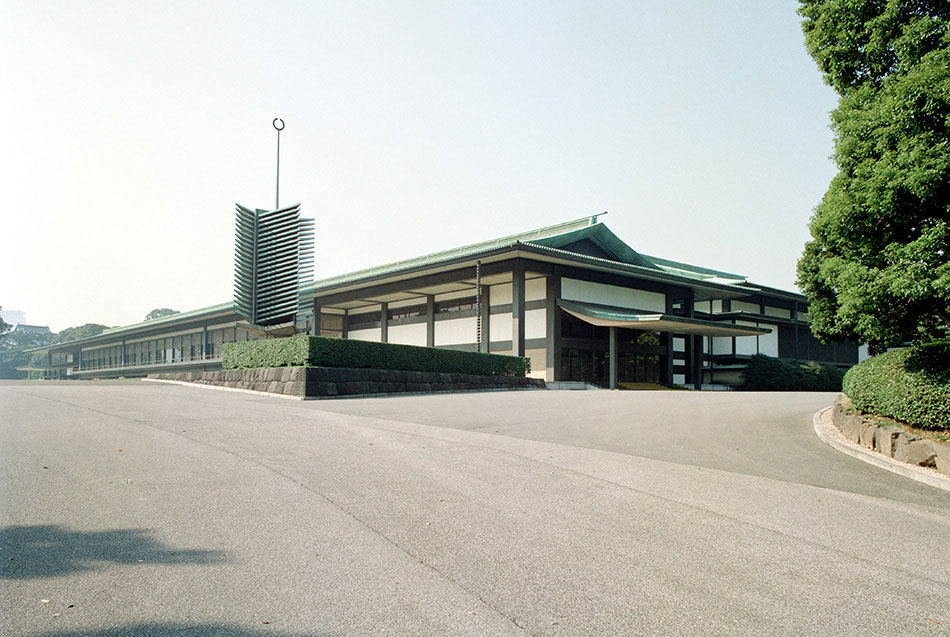
Copyright Imperial Household Agency of Japan
Visiting the Tokyo Imperial Palace
You can call by the site of the Imperial Palace any time –its perimeter is a popular jogging route and the East Gardens are open to the public year-round. However, to make the most of your visit and get a good historical overview, put on some comfortable shoes and take a walking tour.
Check the Imperial Palace’s official website for a map of the grounds.
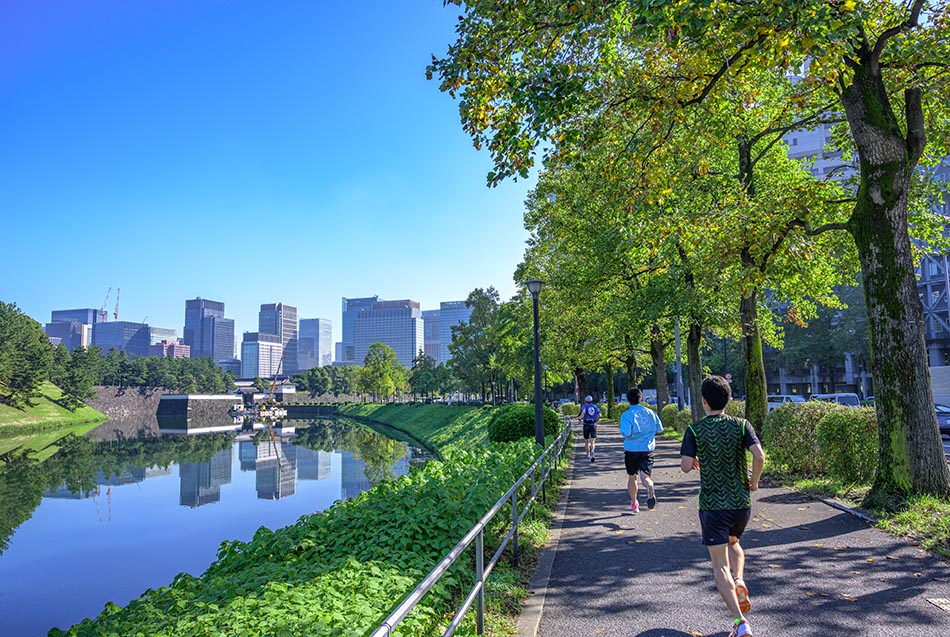
Imperial Palace Walking Tour
Some part of the inner palace grounds can only be viewed on a tour, which is held in English and Japanese, twice daily, Tuesday thru Saturday. While same-day tickets are available, you can easily skip the queues by making an advance reservation for a ticket through contacting the Imperial Household Agency. The tour is open and distributed from 9:00 for the morning tour starting at 10:00, and 12:30 for the afternoon tour starting at 13:30. The 75-minute tour meets at Kikyomon Gate. Although it won’t take you inside the palace, you will get the chance to see historical and beautiful sites such as the Mt. Fuji-view Keep and the Lotus Moat, and, of course, you will cross over the famous Nijyu Bridge, considered a symbol of the palace and even Tokyo itself.
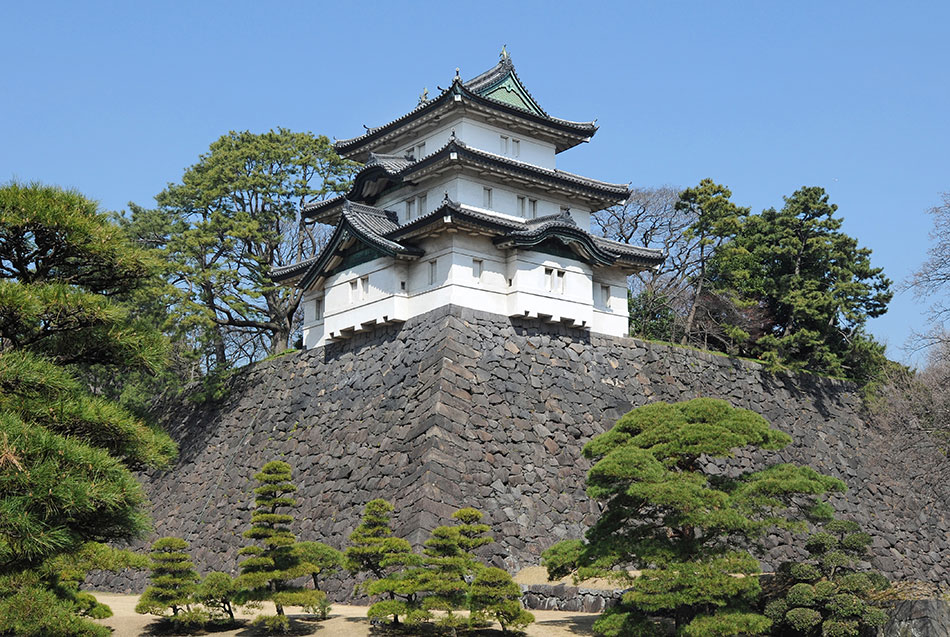
East gardens
Open daily except Mondays, Fridays and designated holidays, these beautiful Japanese gardens are free to the public and especially popular for their dazzling cherry blossoms during the spring and their vibrant autumn foliage later in the year. Take a stroll for a glimpse into the area’s history as the former site of Edo Castle-you can view and climb the foundation of a castle tower that burned down over 350 years ago. Also stop by the Museum of the Imperial Collections.
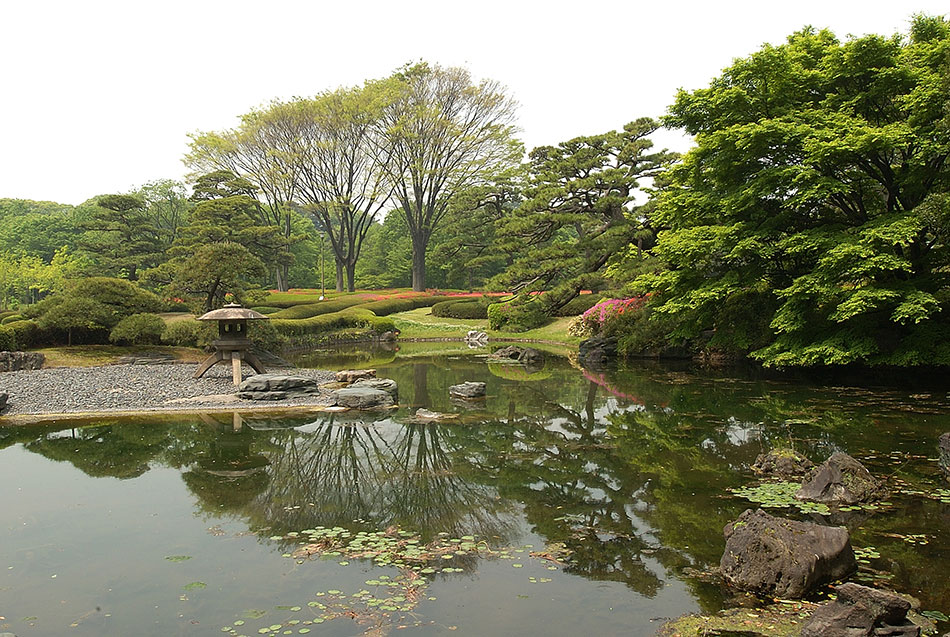
"Ippan Sanga"- Seeing the Imperial Family
Since the Imperial Palace is the main residence of the Imperial Family, it is fairly understandable that they can’t welcome visitors all year round. But there are two days a year when you catch a glimpse of them up close. As part of a New Year celebration , on January 2nd, the grounds of the Imperial Palace are open to the general public. Large crowds gather in the square in front of the Chowaden Reception Hall where the Imperial Family make five scheduled public appearances from morning to early afternoon. Due to the large crowds, leave your bags behind and wear comfortable shoes. It may take more than two hours to get to the Main Gate from the Front Plaza of the Imperial Palace due to a large turnout so make sure to arrive well in advance.
The other opportunity to get up close to the Imperial Palace is on the date of the current Emperor’s birthday-February 23rd. The Imperial Family will make three appearances and you can also sign the Greeting Book.
Hotels near the Imperial Palace
Sitting truly in the heart of Tokyo and with great access to the city, there are plenty of hotels around the Imperial Palace. Imperial Hotel Tokyo is a luxurious hotel that has won 5 stars on the hotel information website "five Star Alliance". It opened in 1890 in order to accommodate an influx of distinguished international visitors.
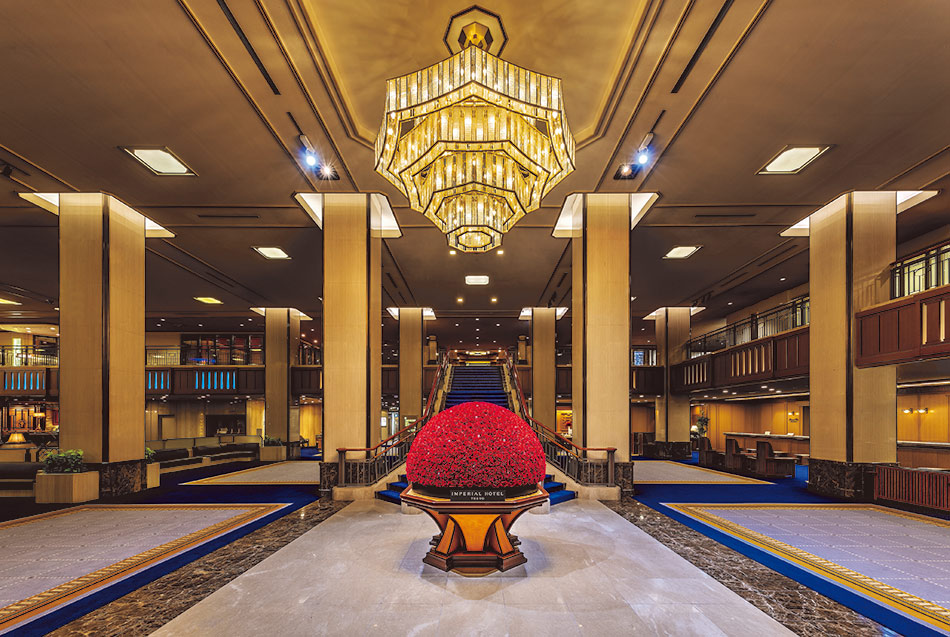
The Forbes Travel Guide five-star Palace Hotel Tokyo is also known for its perspective on the city and a singular, moat-side setting just opposite the Imperial Palace gardens.
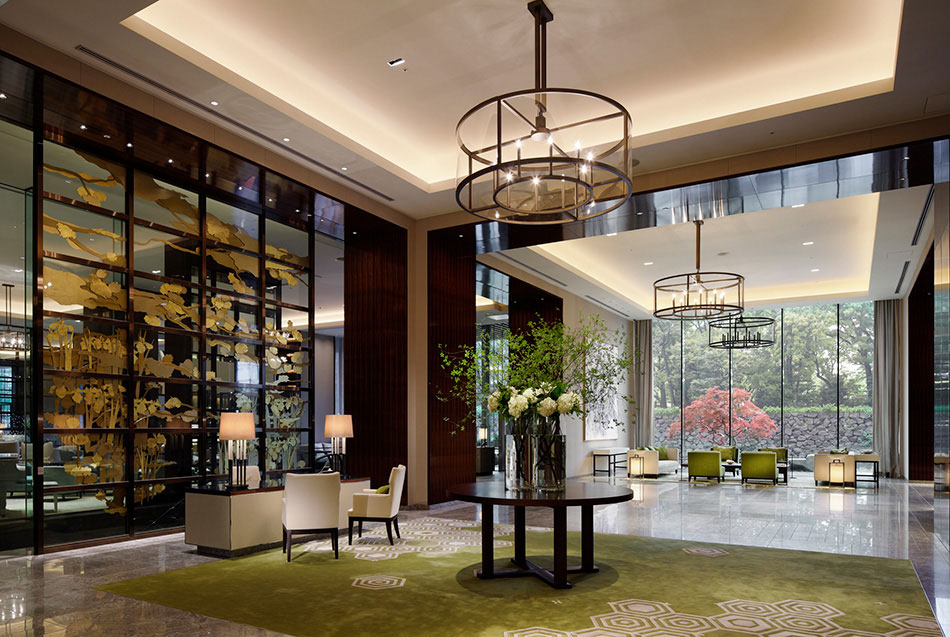
For more mid-range and budget accommodation, take a look in the Hanzomon area on the western edge of the palace grounds or around Kudanshita to the north.
Find Out More
- Experiences & Activities
- Historical Sites
- Parks & Gardens
- Visit Tokyo >
- Tokyo Area Guide >
- Central Tokyo >
- Tokyo Station & Marunouchi area travel guide >
- About This Site
- Font Size and Color
Copyright © Tokyo Convention & Visitors Bureau. All rights reserved.
Tokyo Imperial Palace
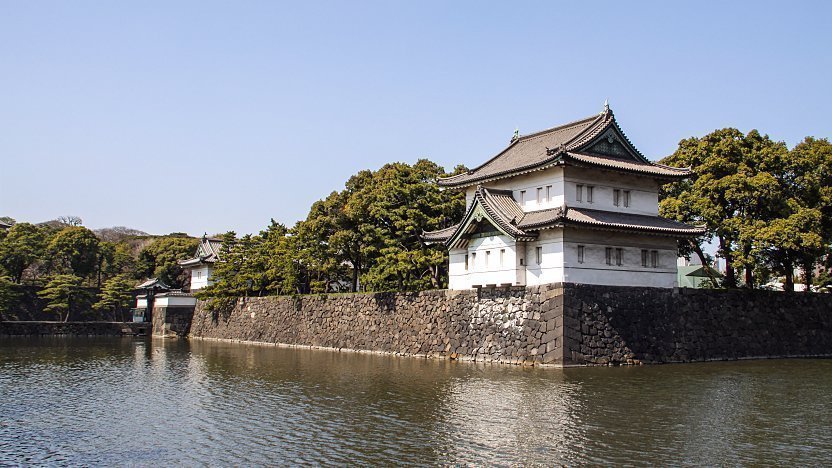
The current Imperial Palace (�c��, Kōkyo) is located on the former site of Edo Castle, a large park area surrounded by moats and massive stone walls in the center of Tokyo , a short walk from Tokyo Station . It is the residence of Japan's Imperial Family .
Edo Castle used to be the seat of the Tokugawa shogun who ruled Japan from 1603 until 1867 . In 1868 , the shogunate was overthrown, and the country's capital and imperial residence were moved from Kyoto to Tokyo . In 1888 construction of a new Imperial Palace was completed. The palace was once destroyed during World War Two , and rebuilt in the same style, afterwards.
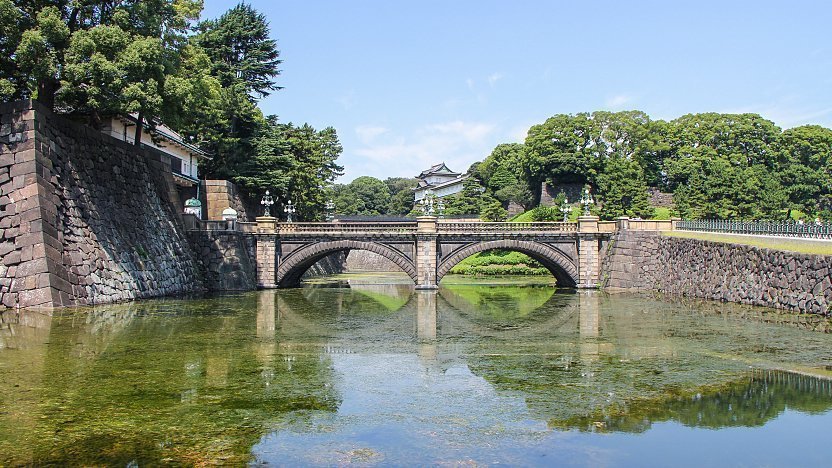
From Kokyo Gaien, the large plaza in front of the Imperial Palace, visitors can view the Nijubashi, two bridges that form an entrance to the inner palace grounds. The stone bridge in front is called Meganebashi (Eyeglass Bridge) for its looks. The bridge in the back was formerly a wooden bridge with two levels, from which the name Nijubashi (Double Bridge) is derived.
The inner grounds of the palace are generally not open to the public. Only on January 2 ( New Year's Greeting ) and February 23 ( Emperor's Birthday ), visitors are able to enter the inner palace grounds and see the members of the Imperial Family , who make several public appearances on a balcony.
Furthermore, guided tours of the palace grounds are offered during the rest of the year, although no buildings are entered. The tours take about 75 minutes and are held in English and Japanese daily at 10:00 and 13:30 except on Mondays, Sundays and national holidays . Advance reservations can be made through the Imperial Household Agency (see links below ), but same-day registrations before the start of the tours are also possible at the Kikyomon Gate.
Adjacent to the inner grounds of the palace are the Imperial Palace East Gardens which are open to the public throughout the year. See the East Gardens page for more details.
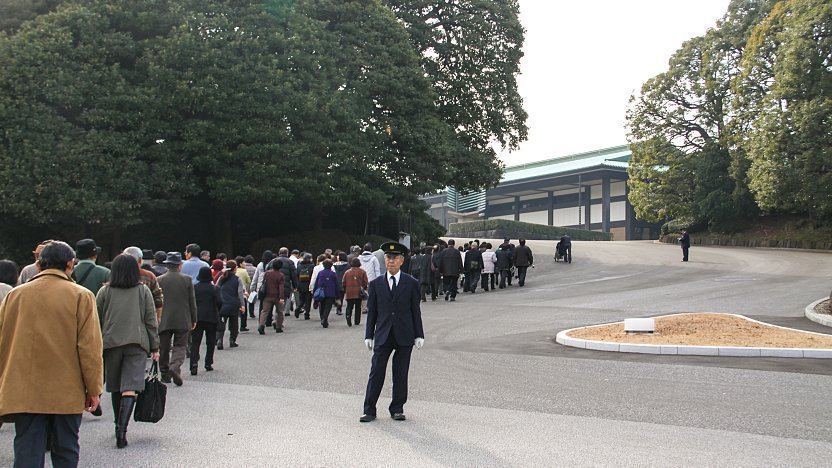
Getting there and around
The Imperial Palace is a ten minute walk from Tokyo Station .
Orientation in Tokyo
Questions? Ask in our forum .
Links and Resources
Imperial household agency, application for visit, hotels around tokyo.
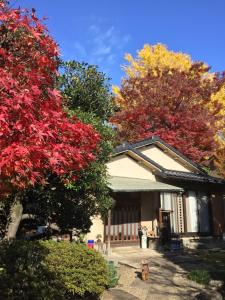
Experiences around Tokyo

- Media & Industry
- Meetings & Events
- Select Language 简体中文 繁體中文(香港) 繁體中文(臺灣) India (English) Bahasa Indonesia 한국어 ภาษาไทย Tiếng Việt Singapore (English) Philippines (English) Malaysia (English) Australia/New Zealand (English) Français Deutsch Italiano Español United Kingdom (English) Nordic countries(English) Canada (English) Canada (Français) United States (English) Mexico (español) Português العربية Japan(日本語) Global (English)
- India (English)
- Bahasa Indonesia
- Singapore (English)
- Philippines (English)
- Malaysia (English)
- Australia/New Zealand (English)
- United Kingdom (English)
- Nordic countries(English)
- Canada (English)
- Canada (Français)
- United States (English)
- Mexico (español)
- Global (English)
- Fujiyoshida
- Shimonoseki
- Ishigaki Island
- Miyako Island
- Kerama Island
- Tokyo Island
- Koka & Shigaraki
- Hida Takayama
- Ginza, Nihonbashi
- Beppu & Yufuin (Onsen)
- Ginzan Onsen
- Nagasaki Islands

- Kumano Kodo
- Shikoku Karst
- Amami Oshima
- Hachimantai
- Omihachiman
- Aizuwakamatsu

- Diving in Japan
- Skiing in Japan
- Seasonal Flowers in Japan
- Sustainable Outdoors
- Off the Beaten Track in Japan
- Scenic Spots
- World Heritage
- Home Stays & Farm Stays

- Japanese Gardens
- Japanese Crafts
- Temple Stays
- Heritage Stays
- Festivals and Events
- Theater in Japan
- Japanese Tea Ceremony
- Cultural Experiences in Japan
- Culture in Japan

- Local Cuisine Eastern Japan
- Local Cuisine Western Japan
- Local Street Food
- Japan's Local Ekiben
- Japanese Whisky
- Vegetarian and Vegan Guide
- Sushi in Japan Guide
- Japanese Sake Breweries

- Art Museums
- Architecture
- Performing Arts
- Art Festivals
- Japanese Anime and Comics
- Japanese Ceramics
- Local Crafts

- Scenic Night Views
- Natural Wonders
- Theme Parks
- Samurai & Ninja
- Iconic Architecture

- Wellness Travel in Japan
- Japanese Ryokan Guide
- A Guide to Stargazing in Japan
- Relaxation in Japan
- Forest Bathing (Shinrin-yoku)

- Experiences in Japan
- Enjoy my Japan
- National Parks
- Japan's Local Treasures
- Japan Heritage
- Snow Like No Other
- Wonder Around Japan

- Visa Information
- Getting to Japan
- Airport Access
- COVID-19: Practical Information for Traveling to Japan
- Anime Tourism
- Countryside Stays
- Accessible Tourism
- Hokkaido Great Outdoors
- Scenic World Heritage in Tohoku
- Shikoku’s Nature and Traditions
- Southern Kyushu by Rail

- Traveling by Rail
- How to Travel by Train and Bus
- JR Rail Passes
- Scenic Railways
- Renting a Car
- Sustainable Travel in Japan
- Travel Brochures
- Useful Apps
- Online Reservation Sites
- Eco-friendly Accommodation
- Luxury Accommodations
- Traveling With a Disability
- Hands-free Travel
- How to Book a Certified Tour Guide
- Volunteer Guides
- Tourist Information Center

- Japanese Manners
- Spring in Japan
- Summer in Japan
- Autumn in Japan
- Winter in Japan
- Cherry Blossom Forecast
- Autumn Leaves Forecast

- Japan Visitor Hotline
- Travel Insurance in Japan
- Japan Safe Travel Information
- Accessibility in Japan
- Vegetarian Guide
- Muslim Travelers
- Safety Tips

- JAPAN Monthly Web Magazine
- Arts & Cultures
- Nature & Outdoor
- Festivals & Events
- Insider Blog
- Things to do
- Local Guides
- Food & drink
- Traditional
- Hokuriku Shinetsu

My Favorites
${v.desc | trunc(25)}
Planning a Trip to Japan?
Share your travel photos with us by hashtagging your images with #visitjapanjp
- Imperial Palace & Tokyo Station
- Imperial Palace
Imperial Palace 皇居
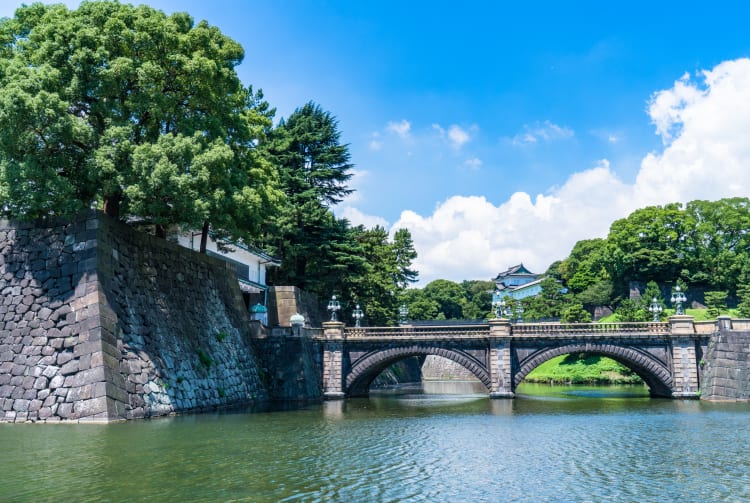
1-1 Chiyoda, Chiyoda-ku, Tokyo-to
- View on Google Maps
- Get Transit Info
Visit the home of Japan's Imperial family
Tucked away behind moats and thick stone walls, the residence and offices of the Emperor of Japan occupy an enviable spot in central Tokyo.
Quick Facts
The Imperial Palace moved to Tokyo in 1868
Tours of the palace run daily at 10 a.m. and 1:30 p.m, and take approximately 1 hour.
How to Get There
The palace is located in central Tokyo and is easily accessible from Nijubashimae Station or Otemachi Station.
Visitors who wish to see the entrance to the palace should head towards the Sakashita-mon Gate, which is a 15-minute walk from Nijubashimae Station or Otemachi Station. You can also walk there from Tokyo Station's Marunouchi exit in 20 minutes.
If you plan on joining the Imperial Palace tour, meet your guide at the Kikyomon Gate, a 10-minute walk from Nijubashimae Station or Otemachi Station.
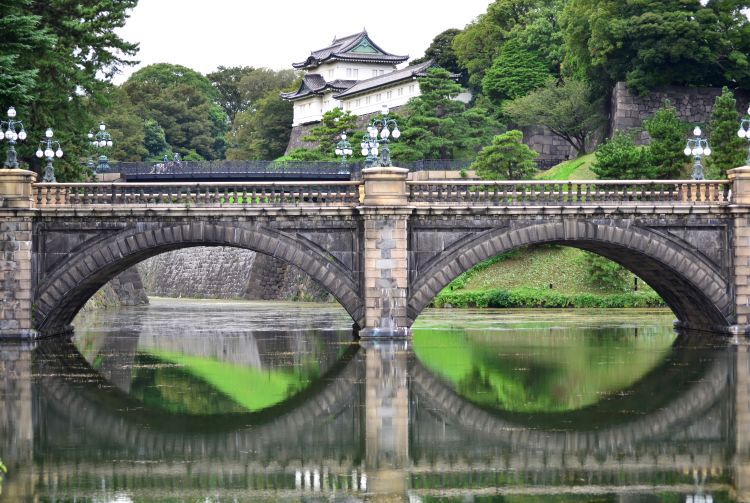
The center of the new capital
For around 1000 years Kyoto was the capital of Japan, but in 1868 both the capital and Imperial Palace were moved to Tokyo after the Meiji Restoration. This has been the home of the Emperor and his family ever since.
See beyond the gates
Arranging for a tour.
Tours run twice each day except on Sundays, Mondays and public holidays. Reservations are recommended, and can be made through the Imperial Household Agency's website (note: visits and advance applications have been temporarily suspended to prevent the spread of new coronavirus infection. Check the website for more information). Although the tours are usually offered in Japanese only, apps in six languages are also available. Highlights of the tour include the chance to see the Kyuden, or main palace, and the Fujimi-yagura watchtower.
Visit during the Imperial family's New Year's greeting
If you're planning a winter trip to Tokyo, be at the palace on January 2 for the New Year's greeting. On that special occasion, the palace gates are opened to visitors who can come in and marvel at the inner palace grounds and see the Imperial family greeting their subjects.
* The information on this page may be subject to change due to COVID-19.
Recommended for You

Please Choose Your Language
Browse the JNTO site in one of multiple languages
- Tokyo Cheapo (繁體中文)
Tokyo Imperial Palace Mega Guide
Just ten minutes from Tokyo Station lies Tokyo Imperial Palace: a wealth of gardens and galleries, with guided tours and castle ruins.
Pro tip: Make the most of your visit to the area by joining this walking tour . Not only will you visit the Imperial Palace, but you’ll also get to taste some sake, try your hand at knife sharpening, and learn about traditional Japanese food like dashi (soup stock) and seaweed.
Like an island of respite, the Tokyo Imperial Palace is surrounded by parks and gardens offering a getaway from the busy city streets. Surrounding the home of the Emperor, the grounds are painstakingly maintained and are one of the top destinations for visitors to the capital.
Covering 1.3 square miles, the grounds include hanami (cherry blossom viewing) spots, art galleries, historical ruins and beautiful gardens—plus a private section reserved for royalty, of course. Once the site of Edo Castle, the land is now among the most highly valued in Japan, and is a short walk from Tokyo Station .
If you’re planning to visit, there are organized tours of inner areas available for free, as well as special days when you can see the Emperor himself—so read on and learn all you need to know about Tokyo Imperial Palace and the treasures it holds!
Pro tip: Book a private guided tour to get the most out of your visit to the Imperial Palace in Tokyo.
The History of Tokyo’s Imperial Palace

The current palace grounds were the site of Edo Castle, and before that, the residence of warrior Edo Shigetsugu. The land was close to Hibiya , which was then a beach, and was a strong flatlands location, strengthened by moats. Built in 1457 by Ota Dokan, Edo Castle (also known as Chiyoda Castle) was an important location in the development of Japan. During the Siege of Edo, it was taken over by the Hojo clan, and was later abandoned during the Siege of Odawara in 1590. The castle later became the base of Tokugawa Ieyasu and the Tokugawa Shogunate was formed there, with the castle becoming the military capital. Read more about the history of Tokyo . If you want some more of Edo-era Tokyo then heck out these old-school corners of Tokyo or these unusual theme parks in Japan .
Following the Meiji Restoration it became the Imperial Palace, with Emperor Meiji residing there until the new palace was built. Unfortunately, like many old Japanese structures, almost nothing remains of the original castle or ancient buildings today following fires, earthquakes and war damage—but a few small areas have survived. The Tenshudai (pictured above) is the foundation of the once-tallest tower in Japan, and can be found in the East Gardens.
Tokyo Imperial Palace grounds and gardens
Although the inner grounds are off-limits for the majority of the year, visitors are still able to explore the parks and gardens free of charge and without registration. The area is divided into three main sections: the East Gardens, Kitanomaru Koen Park and the Kokyo Gaien National Garden—all surrounded by a great jogging route for those who would like more than a stroll.
The East Gardens

Opened to the public in 1968, the East Gardens are located in the innermost circles of Edo Castle: the Honmaru and Ninomaru . The former was the principal complex where the rulers spent their daily lives, the latter was where meetings would take place with visiting feudal lords. The two areas combined form one of the last Edo Gardens to be preserved in Japan, and are filled with carefully-maintained seasonal flowers and trees. The Honmaru is a large lawn area and the Ninomaru a manicured garden, creating a great space for escaping the city and relaxing in much-needed nature.
The gardens also contain some of the few remnants of Edo Castle, including the moat walls, the entrance gate and some guardhouses. On the lawn of the Honmaru area you can see the imposing foundations (tenshudai) of the former castle tower, which was once the tallest castle tower in Japan. Unfortunately, it only stood for 19 years, as it was destroyed in a fire in 1657 and never rebuilt.
Pro tip: If you’re keen to know which flowers will be in season when you visit the Tokyo Imperial Palace gardens, check this handy (and very extensive) flower guide .
Opening hours
The East Gardens are closed on Mondays and Fridays, as well as from Dec 28th – Jan 3rd and on some special occasions. Otherwise, they are open from 9am to 4pm, with hours extended until 4:30pm between March 1st and April 14th, and until 5pm from April 15th – August 31st. Last entry is half an hour before closing. Entry is free, but you may be given a small entry token to return when you leave, so they can keep track of guests before closing.
Access: The East Gardens are easily accessible from Otemachi Station. Look for the Otemon Gate.
Kokyo Gaien National Garden

First opened to the public in 1949, Kokyo Gaien was previously part of the palace grounds and features the Nijubashi Bridge. The bridge was originally made with wood, and then an extra level was added, causing it to be nicknamed the “double bridge.” The area was once known as Nishinomarushita and was the location of the servants’ houses.
As well as the famous Nijubashi, you can see the Sakuradamon Gate, which is a cultural asset, and a bronze statue of samurai Masashige Kusunoki .
Slightly confusingly, the title of Kokyo National Garden is usually reserved for the section of gardens in front of the palace, but is also occasionally used to refer to the entire gardens complex, including the parks, so keep that in mind if you get confused (we’ve stuck to the specific garden use here).
Access: This area is best accessed by the Sakuradamon Gate (near Sakuradamon Station). Since it is a public park, access is free and unrestricted.
- Kitanomaru Park

A real green oasis, Kitanomaru Park was once a medicinal garden and is almost entirely surrounded by a moat, giving it a real escapist feel (aside from all the other people). There are two original Edo gates at the entrances: the Shimizumon Gate, which leads you to the Chiyoda ward office, and the Tayasumon Gate, which takes you to Kudanshita Station, and was built in 1685. The park was opened to the public in 1969 to commemorate the 60th birthday of Emperor Showa and is a mix of flowers and woodland—perfect for getting some shade in summer .
You can follow the Chidorigafuchi walking path, which includes a moat-side stretch with cherry-blossom in spring, without the risk of being run down by joggers. From April to November, you can rent paddle-boats on the moat, which is especially lovely when surrounded by pink blossom, and creates a pretty picturesque scene for onlookers too. The park is also home to the Science Museum, Nippon Budokan and the National Museum of Modern Art, but more on those below!
Access: This area is best accessed from the East Gardens or Takebashi, Kudanshita or Hanzomon stations. Since it is a public park, access is free and unrestricted.
Guided tours of Tokyo Imperial Palace

If you would like to get closer to the Tokyo Imperial Palace, you can join one of the official guided tours for access to some of the inner areas. They will take you to special spots including the Fujimi-yagura (Mt. Fuji-view Keep) and the Hasuikebori (Lotus Moat), as well as offer views of treasured spots like the Seimon Testubashi Bridge and the Fujimitamon Defence Gate. You will also get pretty close to the Imperial Palace itself, and can see the more modern additions to the royal grounds.
Tokyo Imperial Palace tours are free but require registration, either in advance online or on the day. Currently, only 120 guests are accepted each day (previously 500), with 70 spaces available for on-the-day registration (previously 300), with reccommendations to arrive early if you can.
The tours take place at 10am and 1:30pm and are conducted in Japanese and English, although headsets may be available in a few other languages. The tours take around 75 minutes and visit 11 different spots—starting from the Kikyomon Gate , which is also where you register.
If you’re a sporty-type, you might also enjoy this cycling tour of Tokyo . It takes you not only to the Imperial Palace, but also Meiji Jingū Shrine , Roppongi , and even as far as Ginza .
There are also private guided tours of the Tokyo Imperial Palace available.
Alternatives
Instead of a tour, you can download the free Imperial Palace audio guide app , if you’re the type who prefers to wander around. You can also find free guided tours that take in the palace and other Tokyo sights. Renting a bicycle and cycling around the special 3km palace course that’s open on Sundays is also a fun idea.
Bonus attractions at the Imperial Palace
As well as the gardens and guided tours, the green escape is home to a number of additional attractions that are well worth a side-visit during your stroll. These three are positioned up in the northern area of the gardens in Kitanomaru Park.
National Museum of Modern Art, Tokyo
Home to countless examples of Japanese and international modern art, this museum is a treasure trove for modern art lovers. There are excellent works in the permanent collection including photography by Walker Evans, abstract pieces by Willem de Kooning and works by Wassily Kandinsky. There is a focus on the effect of Western art on the Japanese scene and vice versa, and artists such as Yayoi Kusama and Ai Mitsu have pieces on display. The museum is also home to Japan’s National Film Center, which has a great collection, as well as regular screenings.
Hours: 10am – 5pm, 9pm on weekends | Closed Mondays | Free access on the first Sunday each month, otherwise entry is ¥ 500 for adults and ¥ 250 for students.
Nippon Budokan
Built to host the judo tournaments of the 1964 Olympics, the Budokan is a large sports arena that still hosts martial arts events as well as other sporting events. The national championships of judo, kendo, aikido and karate are still held here annually and can be a great opportunity to see traditional sports in action. If you like Japanese sports, then be sure to check out our guide to seeing sumo while you’re in town!
It has also become a popular music venue; the first music performance was the Beatles in 1966 and since then hundreds of performers have take to the stage, including Diana Ross, Prince, AKB48 and Morning Musume. The venue is still popular and is a great place to check out events while you’re in the area! Take into consideration though that if there is an event on the day you visit, you may want to avoid Kudanshita Station.
Science Museum
This museum is mainly for the kids and their adults, as it is a family-friendly educational mainstay that has been entertaining the Tokyo youth since 1964. It is a bit of an “all-in-one” museum and includes displays on computer technology, transport, space, the future, life sciences and more.
Hours: 9:30am – 4:50pm (last entry 4pm) | Closed Wednesdays (check their website for exceptions) | Entry is ¥ 950 for adults and ¥ 500 – ¥ 600 for children, free for those under 3.
Special dates at Tokyo’s Imperial Palace: Seeing the Emperor
They may be few, but they are not far between: the three special entry days for the Imperial Palace all take place in winter, from the 1st of December to the 23rd of February. Offering glimpses of the palace and even of the Emperor himself, these days are incredibly busy due to their rarity, so be prepared for crowds and queues!
Note: Currently, you have to pre-register for these events.

January 2nd – New Year Greeting
This is a rare chance to see the Imperial Family as the Emperor, Empress, and family appear on the balcony of the Chowaden Hall to greet well-wishers. The event is hugely popular, and crowds are immense, so be prepared. There are five appearances , with the first two including the adult family members and the remaining three including the younger members too. The times are: 10:10am, 11am, 11:50am, 1:30pm and 2:20pm. You can enter the grounds at the main gate from 9:30am until 2:10pm but it is advisable to arrive early. More information .
February 23rd – The (new) Emperor’s Birthday
To celebrate his birthday, the Emperor and his family are expected to continue tradition and make three appearances from the balcony of the Chowaden Hall. The day is also a national holiday, so it is a whole new level of busy. In the afternoon, a guestbook is opened to all visitors, and tents are set up allowing everyone to write a message to the Emperor. From 12:30pm to 3:30pm, the book is in front of the Imperial Household. The appearance times are 10:20am, 11am, 11:40am, and you can enter the grounds from 9:30am until 11:20am at the main gate. Note that the East Gardens are closed on this day, but visitors can exit through them. More information .
December 1st-9th – Visit of the General Public to Inui Street
Between 9am and 3pm on these days, you can walk straight through the palace grounds from the Sakashitamon Gate to the Inuimon Gate. This route will mean you have the Fukiage Gardens and Imperial Residence on your left, and the East Gardens to your right, with a good portion of the walk following the Hasuikebori moat. More information .
Rules and considerations
The process for seeing the Emperor and Imperial Family is relatively straightforward. Nearby stations are flooded with well-wishers being directed by police, so just follow the crowds to the main palace gate (Nijubashi), which opens at 9:30am and is only entrance open that day. Once you reach the gate, there is a brief security check before you are handed a small Japanese flag made of paper and sent off on a brief walk to Chowaden Reception Hall. The Emperor and his family appear in a glass-enclosed viewing gallery above the crowd as everyone cheers and waves their flags wildly. The Emperor gives a brief speech, and then the crowd is shuffled in the direction of well-marked exits.

Getting to the Tokyo Imperial Palace
If you’re heading straight over from Tokyo Station , it’s a simple 10-minute walk from the Marunouchi Central Exit (not Yaesu), heading out onto Gyoko-dori and heading straight down to the Wadakura-mon Gate.
If you’re wanting to register for a palace tour, you need to head to the Kikyomon gate, which is a 10-minute walk from Nijubashimae Station or Otemachi Station via the Otemon Gate, or 15 minutes from Tokyo Station.
For the northern area, you can head to Kudanshita Station for the Nippon Budokan and Science Museum or Takebashi Station for the National Museum of Modern Art.
Imperial FAQ: All Your Questions Answered
There’s a lot of information about the palace, so if you’re looking to have your simple questions simply answered, then look no further.
How old is the Tokyo Imperial Palace?
Technically the Imperial Palace buildings are all modern, but the use of the site as a castle is over 550 years old.
When was the Tokyo Imperial Palace Built?
While the current buildings are a modern creation, the site was home to the Edo Castle, built in 1457. The castle changed hands and was destroyed and rebuilt over the centuries, becoming the Imperial Palace after the Meiji Restoration in 1868.
What is inside Tokyo Imperial Palace?
There are outer grounds which are open to exploration with museums and gardens, inner gardens which are only open on specific days, and the palace itself, which is never open to the public.
Who Lives in Tokyo Imperial Palace?
Emperor Naruhito lives in the Imperial Palace with his wife Empress Masako and his only child, Princess Aiko. He is the 126th monarch of Japan and took over when his father Emperor Akihito abdicated in 2019.
Can you go Inside Tokyo Imperial Palace?
While some of the grounds and gardens are open daily, the inner section is only open on certain days (see above) and the actual building is never open to the public.
Keen on Exploring Other Historical Sites? See our guide to the best castles in and around Tokyo . Also read about the Kyoto Imperial Palace .
While we do our best to ensure it’s correct, information is subject to change. Post first published in January, 2018. Last updated May, 2022.
- Imperial Palace
- Nippon Budōkan
- Imperial Palace Gardens
- Tokyo Station
- National Museum of Modern Art
- Cherry blossoms
- Family friendly
- Imperial palace
- Sightseeing
- Walking Tour
Get our Tokyo Cheapo Hacks direct to your inbox

Which is the Best View in Tokyo: Top Observation Decks

The Best eSIMs for Visiting Japan

A Guide to ALL Pokemon Centers in Tokyo, Japan

Hakone Day Trip from Tokyo

Top Things to do in Odaiba: Gundam, Museums & Tokyo Bay

Luggage Storage In Tokyo

Renting a Pocket Wifi Router in Japan: The Best Options

Where To See Yaezakura: Late-Blooming Cherry Trees in Tokyo
8 perfect picks, from parks to shopping streets.

New Video! Top 20 Things to Do in Shinjuku
You'll need more than a day — there are LOTS of things to try!

6 Spectacular Spring Flower Festivals Around Tokyo
Move over, cherry blossoms! These other blooms will take your breath away well into late spring.

English-Speaking Hospitals in Tokyo — And How To Visit Them
Absolutely everything you need to know about seeing a doctor in Japan.

Yozakura: 8 Best Nighttime Cherry Blossom Illuminations in Tokyo
Light-ups have been extended, since the blossoms were so late this year.

Updated Forecast: 2024 Tokyo Cherry Blossom Dates
They've been teasing us — but looks like they're about to bloom, at last.

April 2024: 5 Events Not To Miss in Tokyo
A chance to see the infamous "penis festival", puppies, processions, and more!

Mega Guide: 24 Best Places to See Cherry Blossoms in Tokyo
Choose from parks, traditional gardens, mountains and more.

Spring Escapes: Top 7 Day Trips from Tokyo
Must-see cherry blossom, moss phlox, and wisteria locations — all easily accessible from Tokyo.

Ashi Angels: Hakone for Evangelion Fans
Explore the real Tokyo-3.


Top 10 Tokyo Cherry Blossom Festivals in 2024
Where to go for street food, music — and lots of sakura.

New Video: Top Japanese Phrases You Need Before Traveling to Japan

Recommended hotels located nearby

Close without accepting
- About this website.
- Introduction to Shitamachi/Old Tokyo.
Free tour of the Tokyo Imperial Palace in English

Since March 2018, the Imperial Household Agency organises free tours of the inner palace grounds in English. Previously this was only available in Japanese or you needed to download an app if you wanted to hear explanation in English. The tour takes you close to several buildings of the palace and former Edo Castle, while providing explanation on the history and background.
The main merit to join this tour is that you can have a closer look at Fujimi-Yagura and Fushimi-Yagura , while also walking over the iron bridge, the main entrance of the palace that gives you a great view over nearby Marunouchi district. Check out my full feature article on visiting the Imperial Palace and former Edo Castle .

Fujimi-Yagura and Fushimi-Yagura are truly the highlights of a visit to the Imperial Palace. Without the tour you can only see them from far away or from an uninteresting angle (you can get very close to Fujimi-Yagura through the East Garden, but without a view of the wall on which it is built it is less impressive).
How to book the tour
Booking the tour is very straightforward. Select a day that is available and fill out the form. The person that books the tour can act as group representative, so one person can book for a whole group of people. Website to book the free tour: http://sankan.kunaicho.go.jp/english/guide/koukyo.html
What to expect during the tour
Arrive more than 10 minutes before the tour starts! I arrived 15 minutes before the designated time and I was surprised by the number of people that were already waiting. At Kikyomon Gate, a guard checked my reservation number and gave me a badge. Then, they asked me to stand in a row and wait for a bit. After a couple of minutes, we were lead as a group through the Kikyomon Gate to a baggage checkpoint. After this checkpoint we were asked to have a seat in a big room inside of a small pavilion. In this pavilion were a small souvenir shop, vending machines and toilettes.

A whopping 290 people joined the tour at the same time slot as I did. After some instructions were given in Japanese and English (such as a warning that you cannot shorten the tour), the Japanese language tour departed, followed by the English language tour.
The explanation of the tour-guide was quite clear. Even though a loudspeaker was used, it was best to not go too far from the guide. They left us pretty free to wander a little bit from the group to take photos, but if someone got too far away they intervened.
The two watchtowers and the iron bridge were the highlights of the tour for me. The main palace building and the other buildings next to it were not very impressive. I personally like the older buildings much more, so that is likely my own bias.
Keep in mind that the tour does not take you to all the important buildings and places of former Edo Castle , for this you will need to visit the East Gardens as well.

In practice
Address: 1 Chiyoda, Chiyoda-ku, Tokyo
Closest station: (distance towards Kikyomon Gate) Otemachi Station – 6 minutes walk from exit D2 (Mita Line, Marunouchi Line, Hanzomon Line, Tozai Line, Chiyoda line) Nijubashi Station – 6 minutes walk from exit 6 (Chiyoda line) Sakuradamon Station – 7 minutes walk from exit 3 (Yurakucho line) Tokyo Station – 11 minutes walk from Marunouchi exit (many lines)
Opening hours: only with reservation
Tour is organised everyday except Sunday and Monday. Closed on holidays or at special occasions (quite a lot of days). Tours are at 10:00 and 13:00, in summer only at 10:00.
Fee: free (please note the guide does not accept a tip at the end of the tour)
Web: general: http://sankan.kunaicho.go.jp/english/guide/koukyo.html tour: http://sankan.kunaicho.go.jp/english/guide/koukyo.html fujimi-tamon: http://www.kunaicho.go.jp/e-event/tamon.html
Names in Japanese: 皇居 Kōkyo (Imperial Palace) 江戸城 Edo-jō (Edo Castle)
On the map above, my suggested itinerary is in purple, the itinerary of the official free tour is in yellow. I recommend to do both the purple and yellow route.
You may also like

Mitama Festival at Yasukuni Shrine: 30,000 lanterns

Old buildings in Tokyo? Yes, plenty!

Tokiwa bridge: major gateway to the city

Ochanomizu: Tokyo’s Student Town

Guide to Tokyo Imperial Palace and former Edo Castle: making the...

Yasukuni: not all about sakura
- Tokyo Imperial Palace
Tokyo Imperial Palace: Day Tour
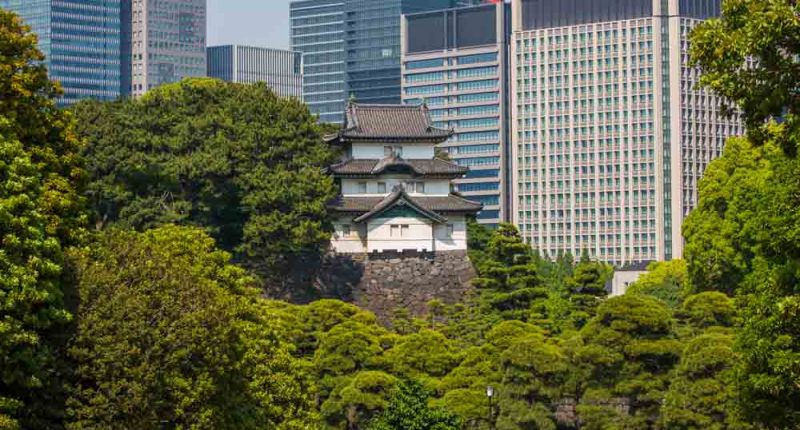
The Omiya Bonsai Art Museum
- Guided Tours
Share article
Signing up for a tour of Tokyo Imperial Palace is one of those things that I had been meaning to do for a long time, but figured I could do anytime so never actually bothered to register.
For those not already aware, Tokyo Imperial Palace is not generally open to members of the public. The closest tourists can usually get to the inner grounds is Seimonishi Bridge to take a picturesque photograph of the famous Nijubashi with Fushimi-Yagura Keep in the distance. There are only two occasions each year when the inner grounds are open to members of the public: 2 January for the New Year’s greeting and the Emperor’s birthday.
The Imperial Household Agency does, however, offer 75-minute tours of a limited section of the inner grounds. It used to be the case that you needed to reserve a place via the official website ; however, in a bid to accommodate the expected increase in tourism in the run up to the 2020 Olympics same-day registration has been possible since mid-2016.
So what of the tour itself? Well, as I mentioned, it is a very limited tour. It is entirely outside; you will not be able to enter any of the buildings in the grounds. The tour departs in groups of over 100 people with the guide taking you past several buildings, explaining a little about the history of each through a portable megaphone.
Given the number of people participating in the tour and the wide open spaces in which the guide gives his introductions, unless you’re at the front of the group you’re going to struggle to hear anything. Audio guides are available in Japanese, English, Chinese, Korean, French and Spanish and can be download to iOS and Android via this link . They do also provide a pamphlet (and a sheet of A4 with translations) that give a one or two sentence explanation about each building, but the tour itself is only conducted in Japanese.
The tour starts from an administrative building near Kikyo-mon Gate . There is a security check before you go through, but there are no restrictions on photographs during the tour so you feel free to take your camera equipment (they only ask you to refrain from large group portraits—presumably because setting up tripods and the whatnot would hold everyone else up). The tour takes you past the following main buildings:
Mt. Fuji View Keep
A 3-storey keep that has withstood much of what nature has thrown at it since its reconstruction in 1659. One of the oldest remnants of the former Edo Castle.
The Imperial Household Agency Building
Head office of the Imperial Household Agency was built in 1935. It was used as the home of the family for some years after the war as reconstruction took place on the Imperial Palace.
Kyuden Totei Plaza
Perhaps somewhat surprisingly, the Imperial Palace itself is—whilst an impressive structure—maybe not what many are expecting. The main building that faces the plaza is called Chowaden (長和殿) a 160-meter long structure with a 100-meter balcony.
The balcony is a lot lower than the television images and newspaper photographs have many believe. The guide explained that images of the imperial family greeting flag-waving visitors on the special occasions when the grounds are open to the general public are deliberately taken from a lower position to give an impression of the balcony being more raised.
Nijubashi & Fushimi-Yagura Keep
These two structures will be familiar to anyone who has visited the Imperial Palace: the ornate stone bridge and the white castle-type structure in the distance that must rank among Tokyo’s most photographed buildings. This is the highlight for many, and is also the turnaround point. The route back takes a slight detour down Yamashita-dori between the Imperial Palace and the Imperial Household Agency building, but is more or less the same as on the way.
Incidentally, the best photograph opportunity on the tour is on the way back as you walk past the small slope that leads to the main building of the palace. Stop here and you can see a beautiful view of Mount Fuji Keep surrounded by greenery with the office buildings of Otemachi in the distance.
The tour is free and, although limited, provides a good glimpse inside the Imperial Palace. The explanations definitely put the tour into a better context so be sure to download an audio guide before you depart, as the pamphlets only give the briefest of descriptions.
Information
You may also like.
- Entertainment
Tokyo Metropolitan Theatre
Hanayashiki amusement park, hakone pirate pleasure boat.
Cookie policy

Tour the Imperial Palace in Tokyo for Free
By: Author Dave Lee
Posted on Last updated: February 19, 2024
Japan's Imperial Palace in central Tokyo has been the official home for Emperors since 1868; visitors can experience it up close on a free guided tour.
The Imperial Palace stands on the site of Edo Castle (est. 1457), a symbol of Japanese history and the seat of power for the Tokugawa shogunate during the Edo period (1603-1868).

When Emperor Meiji moved the capital from Kyoto to Tokyo in 1868, the castle transformed into the Imperial Palace, the residence of Japan's Imperial Family.
It's a testament to Japan's enduring monarchy, one of the oldest in the world, and represents the cultural and historical continuity of the nation amid rapid modernization and change.
In this article, I'll share my experience of touring the Imperial Palace for free on my second trip to Tokyo and how you can do the same.
Table of Contents
Fujimi-yagura
Kokyo kyuden chowaden, nijubashi bridge, fushimi-yagura, free walking tours, touring the imperial palace.

Kel and I hit the breakfast buffet early at the Hilton Tokyo before walking to Shinjuku train station for the ride to Tokyo Station, a few blocks east of the Imperial Palace.
I wanted Kel to experience the impressive Tokyo subway system at least once during our brief stay en route from Vietnam to Texas .
The Imperial Palace, with its moats and gardens, covers a massive 280 acres in the center of Chiyoda City, a district in the middle of Tokyo.
We arrived at the parking lot outside the Kikyo-mon Gate by 9 a.m. and received a numbered ticket (#56) for the morning's free tour.
Due to work schedules, our only opportunity to see the palace grounds together was that morning. Since we had no idea of the demand for these free tours, we were grateful to have gotten there early enough.
At 9:30 a.m., the staff began collecting the tickets, and the free 90-minute tour of the Imperial Palace began near the East Gardens with a walk across the first of several bridges and through the Kikyo-mon Gate.
The large stone walls of the gate and inside the palace grounds reminded us of the Inca walls of Machu Picchu .

The Fujimi-yagura, also known as the “Mt. Fuji-viewing tower,” is one of the few remaining watchtowers of the original Edo Castle, which now forms part of the Tokyo Imperial Palace complex.
This three-story tower holds significant historical and architectural value. It is strategically located on the castle's northeastern corner, a spot traditionally believed to be vulnerable to evil spirits in Japanese geomancy.
Constructed in 1659 during the Edo period, the Fujimi-yagura is an excellent example of traditional Japanese castle architecture, featuring stone foundations, white plaster walls, and characteristic tiled roofs with curved eaves.

The tower was used for defense and as a lookout point, offering panoramic views of the surrounding area, including Mount Fuji, on clear days—hence its name.
The Fujimi-yagura is one of only three remaining towers on the grounds of the Imperial Palace and is designated as an Important Cultural Property by the Japanese government.
Its significance lies not only in its architectural features but also in its role as a symbol of the shogunate's power and the continuity of Japan's imperial tradition.

The second noteworthy building you visit on a free tour of the Imperial Palace in Tokyo is the Kokyo Kyuden Chowaden (or Kyuden for short).
This grouping of interconnected buildings includes the Chowaden Reception Hall, the largest building on the palace grounds.
These modern, steel-reinforced concrete buildings were completed in 1968, after the originals were damaged by fire in May 1945, toward the end of World War II .

The Japanese Emperor and Imperial family make public appearances from a balcony here twice a year. The two occasions are a New Year's Greeting on January 2 and the Emperor's birthday on February 23.
Kyuden Plaza, from which I took these photos during the tour, can hold thousands of visitors for such events. The Kyuden complex includes a State Banquet Hall and the Emperor's offices.
Behind the Kyuden lie the palace's inner grounds and the Imperial Residence, home to the Emperor of Japan, which is neither visible nor accessible during the tour.

Our tour of the Imperial Palace in Tokyo continued with a walk south through the Nishinomaru Gate to the Nijubashi Bridge.
The Nijubashi Bridge is one of the most iconic and picturesque features of the Tokyo Imperial Palace. Its name, which translates to “Double Bridge,” refers to the two distinct bridges that cross the moat leading to the palace's main entrance.
The outer stone bridge is called Meganebashi or “Eyeglass Bridge” due to its arches' resemblance to eyeglasses when reflected in the water. The Kokyo Gaien National Garden and the modern Marunouchi business district are visible beyond it.
The inner bridge, closer to the palace, is a wooden bridge officially named Nijubashi, although the term often refers to both bridges collectively.
Nijubashi Bridge holds architectural and symbolic significance. It serves as the ceremonial entrance to the inner palace grounds, where the Imperial family resides, and is often seen in photographs and representations of the palace.
The bridge's elegant design and reflection in the moat create a serene and picturesque scene, making it a popular spot for foreign tourists and photographers. The inner bridge is only accessible on a guided tour.

While standing on the inner Nijubashi Bridge and looking west, visitors can admire Fushimi-yagura, another of the surviving watchtowers in the Tokyo Imperial Palace.
This two-story tower is at the southern end of the palace grounds, near the Sakurada-mon Gate. It is named after Fushimi Castle in Kyoto , as it is believed that the materials used in its construction were brought from there.
The Fushimi-yagura is an important historical structure showcasing traditional Japanese castle architecture with its white walls, tiled roof, and wooden interiors.
It served as a defensive lookout point, providing a strategic vantage point for monitoring the surrounding area and guarding the castle against potential threats.

At this point in our complimentary tour of the Tokyo Imperial Palace, we began the short walk back to where we started, retracing our steps past the Kyuden (Reception Hall) and Fujimi-yagura castle.
We were reminded that the East Gardens of the Imperial Palace were free to visit and did not require a guide.
This area includes Sannomaru Shozokan (The Museum of the Imperial Collections), which requires advanced booking and timed entry (1,000 yen or $6.65). If you don't take the tour, this museum is accessible via the Ote-mon Gate.
In addition to these beautiful gardens, there are several more attractions within Kitanomaru Park, a short walk north. These include The National Museum of Modern Art, the Science and Technology Museum, and the Nippon Budokan concert hall.
I called for an Uber to take her back to the hotel while I continued on foot to lunch at Sezanne , which I was excited to cover for Feastio, my food blog.

Free guided tours of the Imperial Palace in Tokyo can be organized in advance by following the instructions on the official website . There's a 200-person limit to these tours.
There, you'll also find instructions for walk-in registration if you prefer to try your luck on the day of the tour you want. You'll need a government ID such as a passport or Driver's License. A maximum of 300 people are allowed for these guided tours.
We took the latter approach, and I'm sure we benefited by visiting in February instead of the warmer spring and summer months. We had about 50 people on our tour, which felt like a lot, so I can't imagine several hundred at a time.
If you prefer a more curated and personal experience, you can pay for a private tour through a booking site like Get Your Guide .
Dave is the Founder and Editor in Chief of Go Backpacking and Feastio . He's been to 66 countries and lived in Colombia and Peru. Read the full story of how he became a travel blogger.
Planning a trip? Go Backpacking recommends:
- G Adventures for small group tours.
- Hostelworld for booking hostels.
Monday 19th of February 2024
Great write up Dave, I am adding this to my to do list for our next trip to Japan. Cheers.
- Top Destinations
- Mexico City, Mexico
- Tokyo, Japan
- Paris, France
- Rome, Italy
- London, United Kingdom
- All Destinations
- Upcoming Experiences
- Walking Tours
- Small-Group Tours
- Tours for Kids
- Museum Tours
- Food, Wine and Market Tours
- Newly Added Tours
- Audio Guides
- Pre-Trip Lectures
- Admin Dashboard
- My Favorites
- Client Orders
- Monthly Commissions
- My Advisor Profile
- Advisor Toolkit
- Guide Dashboard
Credit Balance
Transactions are based on current exchange rates and performed in USD. There maybe slight variations in the price estimates.
Introduction to Tokyo Tour, with Imperial Palace Gardens and Nihonbashi

- Imperial Palace Gardens
- Tokyo Station
- Nihonbashi Bridge
- Nihonbashi Mitsukoshi
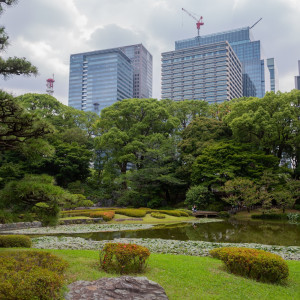
- Dive into Tokyo's captivating journey from a small village to a bustling city, exploring landmark areas with the insights of a local guide.
- This tour lays the perfect groundwork for your Japan trip, offering a comprehensive understanding of Tokyo's history and culture.

- It’s your first time in Tokyo and you want to learn more about the history of the city
- If you're traveling with children under the age of 12, we recommend our family-oriented Tokyo Pop Culture Tour for Kids
- Imperial Palace Gardens - the gardens surrounding the Imperial Palace and former site of the Edo Castle’s circles of defense
- Tokyo Station - the city’s busiest station in terms of trains passing through daily
- Nihonbashi Bridge - a modern reconstruction of the 17th-century bridge that played a vital role in Edo-Kyoto trade
- Nihonbashi Mitsukoshi - Japan’s oldest department store, which can trace its history back to the 17th century
- There will be a break in the tour to stop and use bathroom facilities as well as opportunities to stop and rest along the way if needed. Please communicate any mobility needs or concerns with our team at the time of booking.
- If you are looking to learn more about Tokyo prior to a visit, check out our online lectures at Context Learning .
- The Imperial Palace Gardens are partially wheelchair accessible - some paths are a little steep and some are covered in gravel, but most are usable.
Reviews can only be left by Context customers after they have completed a tour. For more information about our reviews, please see our FAQ .
You May Also Like
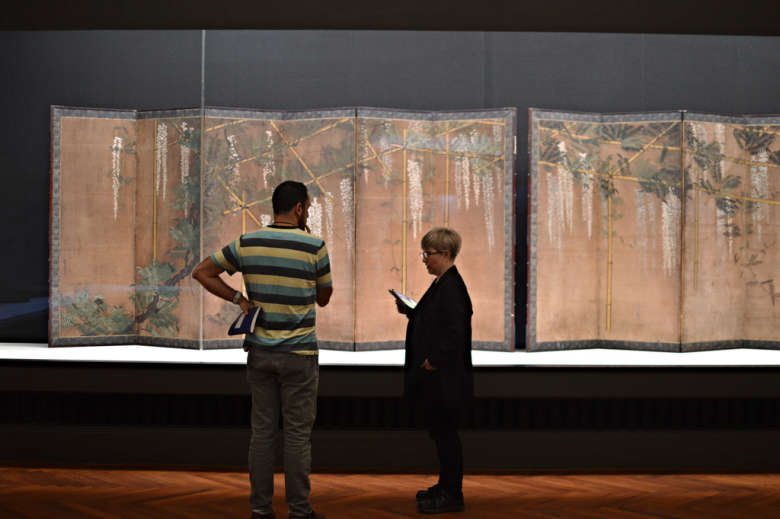
Tokyo National Museum Tour: A Guided Crash Course

Tokyo Akihabara Tour: Anime & Manga
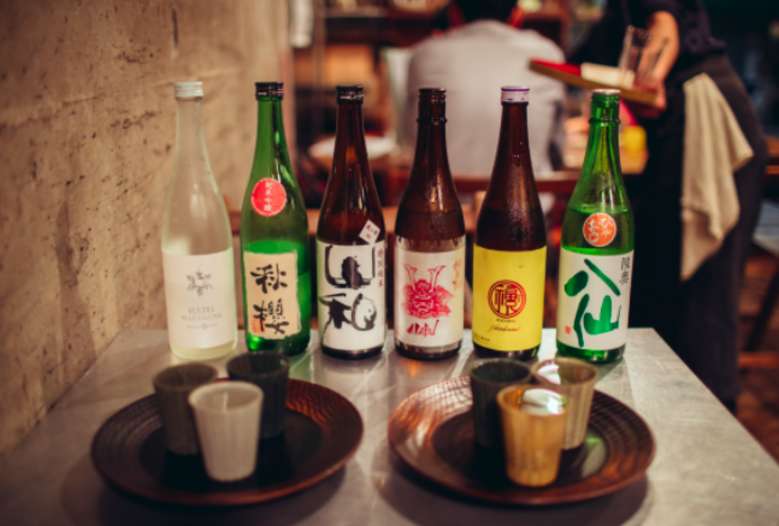
Tokyo Evening Sake Tasting Tour
Book a tour.
- Our Experts
- Working with Context
- View All Cities
- Sustainable Tourism
- Refer a Friend for $50
- Travel Updates
- Advisor Login
- Expert Portal
Subscribe to our Newsletter
- Privacy Statement & Security
- Cancellation Policy
Our website uses cookies to personalize your experience, perform analytics, and tailor ads. By clicking accept, you consent to our use of cookies. To view our data privacy policy, click here .
Our website uses cookies to personalize your experience, perform analytics, and tailor ads. By using our site, you consent to our use of cookies. To view our data privacy policy, click here .
Tokyo Imperial Palace - Opening Hours, How To Get There, And What To Do
By gowithguide travel specialist: fidelia a..
Things To Do
When visiting Tokyo, I bet that you would want to take a peek of the Imperial Palace. However, you might not know when is it opened and what you can do there. Here in this article, I will discuss all the things you need to know about Tokyo Imperial Palace, including opening hours, hot to get there, and what to do when you arrive. Let's go!
About the Imperial Palace Area
The main area itself is not open for public. This is perhaps because the Imperial family themselves still lives in the premises. This is why the main area of the Imperial Palace is closed for public, except on two specific day of the year, which is January 2nd for New Year’s Greetings event and December 23rd which is the Emperor’s Birthday.
However, there are guided tours of the palace grounds offered regularly throughout the years. This tour though does not enter any building. The tour itself spanned for about 75 minutes but would be held in Japanese. Foreign visitors could take English audio headsets.
Prior bookings are required to join the guided tours of the palace grounds. You can book the tour via their website, filled in the form which is in English, or ask someone (hint: a guide !) to book one for you. I found some tours here which offers a walking tour around the Imperial Palace. If you still have questions or unsure feel free to send a tour request .
If you’re lucky, you could get same-day bookings if there are some spots available. Go to the Kikyomon Gate before the start of the tour of the day.
Imperial Palace East Garden
The Imperial Palace East Garden is located in the inner area of the Palace. They were part of the former Edo Castle, which was destroyed in a fire. Although none of the building still exists to this day, the moats, entrance gates, and walls are still there. Even several guardhouses still exist.
You can visit the Imperial Palace East Garden from Otemachi Subway Station within a 10 minutes walk. If you prefer to use the JR line, you can stop at Tokyo station and take a 10 to 15 minutes walk to the Imperial Palace Area.
What to do nearby
Chidorigafuchi park.
This park is popular, especially during the Sakura season. It is basically one of the 12 moats that surround the palace. In this particular moat, the river is lined with beautiful Sakura trees. Although there is no park around the moat, visitors could still enjoy a boat ride for a fee.
This place would be extremely crowded during the hanami (flower viewing) season. There are a few spots for picnic available, but it would be full in no time. If you want to enjoy a picnic in this area, you should come earlier and tag the best spot or send someone to get it first!
Kitanomaru Park
This is another one of the moats surrounding the Palace. Located in the north of the palace, this place used to be a military base before it was converted to a park in 1969. You can find Sakura trees in this moat too, and the plus point of Kitanomaru Park is that this place has more spots for picnics. This park is also quite well known for its Autumn leaves!
Marunouchi Area
The Marunouchi Area lies in close proximity from Tokyo station. It has long been established as a high-class area. This area is lined with skyscrapers and fancy shopping and dining areas. The Marunouchi Area is most famous during the winter season, as thousands of LED lights up the trees in Naka-dori street. This is a definite spot to stop-by for your sightseeing trip around Tokyo Imperial Palace!
Getting the right time to see the Imperial Palace might be difficult. As I mentioned before, you need prior reservations for the guide. However, this might be difficult if you are not used to Tokyo’s public transportation. You might miss your booking since you got lost somewhere down the road. Fear not! I have a way to get you out of this mess: Hire a private guide ! If you hire a private guide, you would be able to get reservations easier. Moreover, your guide could also provide ideas about where to go next from the Imperial Palace!
For those of you who are looking for a private guide, then I would recommend you to get one from GoWithGuide ! Not only that they have excellent guides that would cater to your every need, but they also offer you the best customer service as possible to make sure you’re in the right hands. If you want to include other destinations within your trip, check out all the other private tour groups that are available as well as other cultural activities available in Tokyo.
Blogs About Traveling To Tokyo
13 Top Tokyo Tourist Attractions by Local Guides
Tokyo Itinerary: Tokyo Up To 3 Days - First Timers
9 Best And Most Popular Tokyo Tours
Tour Guide In Tokyo: Pros And Cons To Hiring One
Tokyo New Toyosu Fish Market: Complete Guide Before You Visit
Popular Tokyo Tour Guides

Hi, my name is Arnold and I love meeting new people. I have been living in Tokyo for over 9 years and I believe I know the place well enough to provide a fun tour. It will be my pleasure to help you enjoy your stay in Japan. I can speak English, Chinese and Japanese, so feel free to talk to me in any language that you feel comfortable with. I was once a tourist myself, so I believe I can provide the best tour experience from a tourist's perspective. Let me know your interests and I will make the best tour for you. Hope to see you soon! 嗨,我的名字是阿諾,我喜歡結識新朋友。我在東京生活了9年多,我相信我足以提供您一個有趣的日本之旅。我很樂意幫助您享受在日本的旅遊,所以如果有任何需求請盡量告訴我。我會說英語,中文和日語,所以請隨意用任何你覺得舒服的語言與我交談。作為一個生活在日本的外國人,我自己也曾經是一名遊客,所以我相信我可以從遊客的角度提供最好的旅遊體驗。請讓我知道您的興趣,我會為您規劃最好的行程。希望能與您早日見面!
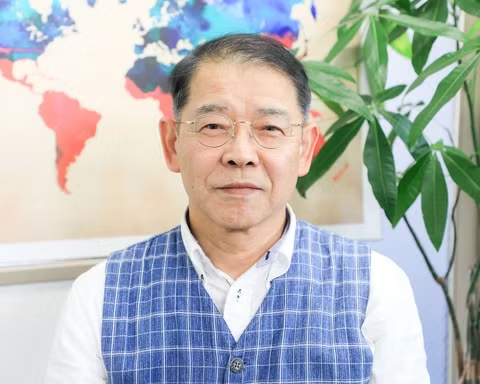
Hello, my name is Yasuro (Mr). I was born and brought up in Kansai, graduated from a univ in Kobe city, after moved into Kanto, 30 years in Tokyo, 2.5 years in Nagoya city, 7.5 years abroad (KL & S'pore) as a rep of a construction company and I got the National Guide Certificate in 2011. My hobbies are making Haiku poems, singing various songs (voice-training for 18 years), playing the folk-guitar, trekking in mountains like Takao and Okutama in the West of Tokyo, visiting museums like in Ueno Park and travelling around Japan to make Haiku poems. Thank you for your attention.

I live in Yokohama, Kanagawa prefecture. I have a license to teach in high schools and was admitted to the degree of Master of Arts in Teaching English as a Second Language in the University of Birmingham. Until 2015 I had been teaching English at public high schools in Kanagawa for 37 years. During that time, I had some experience of guiding students from overseas through sister-school relationship around Tokyo and Kanagawa. Therefore, I had good command of English with the TOEIC score of 935. As for a tour guide experience I earned the certificate of National Government Licensed Guide-Interpreter in English and since then I have guided tourists to the popular sites around Tokyo, Yokohama, Kamakura and Yokosuka. My guiding focuses on introducing not only Japanese historical and cultural backgrounds but also giving tourists some tips to travel Japan only by themselves, such as how to use trains and subways, find good restaurants, reserve tickets, buy survenier, and speak basic Japanese. In addition, my tour includes opportunities to experience Japanese culture like Zen meditation, ninja performance, visiting anime's location sites based on tourists' request. Besides, by means of my hobbies of writing English Haiku and Waka (traditional Japanese poems) and performing Rakugo (traditional Japanese funny story telling) in English, I can surely entertain tourists during the tour. My moto as a tour guide is let the tourists have a once-in-a-lifetime experience in Japan with my profound, intelligible and interestiog guiding.
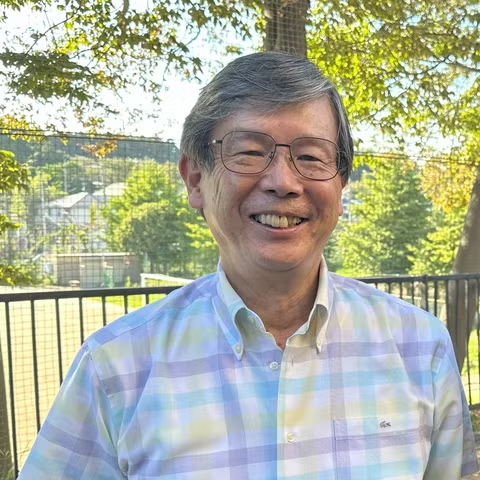
I’m so excited to have a chance to show you around my favorite spots in Kanagawa prefecture. I was born in Kanagawa. I spent my whole school life, including university, here in Kanagawa. I worked as a high school English teacher here for 40 years. I love Kanagawa so much. We have many interesting tourist spots, like Hakone, Kamakura, Enoshima and Yokohama. I got my tour guide license in English in 2009. I am still an English teacher. To give an interesting and impressive lesson to young high school students, I’ve learnt and gathered many kinds of information. I also have a license to teach social studies, so I have a wide range of knowledge about Japanese culture and history. I’m sure to provide you an interesting tour.
Plan your trip to tokyo.
Chat with a local tour guide who can help organize your trip.
Related Blogs
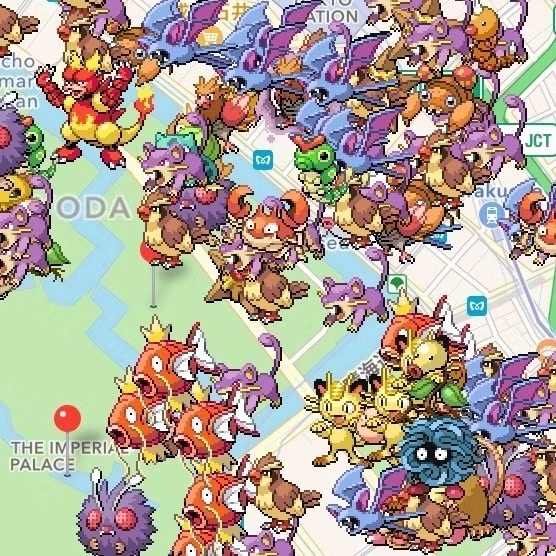
10 Best Places for Pokémon Go in Tokyo
Tokyo, Japan
⭐⭐⭐⭐⭐ Come & enjoy the beauty of Japan with our highly rated Japan private tours. LAST UPDATED: October 15, 2022 TLDR: The 10 best places for P...

Tokyo's Top 10 Sites for Anime and Manga Lovers
Tokyo, and in particular akihabara, has a plethora of museums, shops, cafes, and other sites targeted towards anime and manga lovers. as such, tokyo ....

10 Best Onsen (Hot Springs) Around Tokyo
⭐⭐⭐⭐⭐ come & enjoy the beauty of japan with our highly rated japan private tours. last updated: october 15, 2022what is an "onsen"an "onsen" (温泉) is ....

10 Must-Go Shopping Destinations in Shibuya
Shibuya is a popular shopping district within tokyo where you can find a variety of places for entertainment and recreation such as shopping malls, re....

Follow us on social media
- Japan Tourism
- Japan Hotels
- Japan Bed and Breakfast
- Japan Vacation Rentals
- Flights to Japan
- Japan Restaurants
- Things to Do in Japan
- Japan Travel Forum
- Japan Photos
- All Japan Hotels
- Japan Hotel Deals
- Last Minute Hotels in Japan
- Things to Do
- Restaurants
- Vacation Rentals
- Travel Stories
- Rental Cars
- Add a Place
- Travel Forum
- Travelers' Choice
- Help Center
Tokyo Imperial Palace - Japan Forum
- Asia
- Japan
Tokyo Imperial Palace
- United States Forums
- Europe Forums
- Canada Forums
- Asia Forums
- Central America Forums
- Africa Forums
- Caribbean Forums
- Mexico Forums
- South Pacific Forums
- South America Forums
- Middle East Forums
- Honeymoons and Romance
- Business Travel
- Train Travel
- Traveling With Disabilities
- Tripadvisor Support
- Solo Travel
- Bargain Travel
- Timeshares / Vacation Rentals
- Asia forums
- Japan forum

Hi everyone,
Kind regards,
10 replies to this topic
used to be able to get same day tickets from the gate - can't confirm if still available or what the reality of getting a ticket (or queues) might actually be. Not aware of any private tours the same as the ones via the official site (might get into the free garden area but not the rest of the site)

good point, it is interesting and it is nice to have wandered about - but visiting wasn't a specific highlight, so don't be too upset. As said the gardens are nice, exterior view is still worth seeing, maybe if you have a free half day now do Odawara castle?
It's time-consuming and quite boring. I would spend my time elsewhere. If you like gardens, Hamarikyu is much nicer.

There are day tickets if you queue up early enough, as described on the website
Somewhat off-topic, but I'm currently visiting New York City. Looking into the gardens here made me realize how reasonable the admission fees for gardens are in Japan in comparison to those here.
The gardens at temples and shrines cost more like 500-600 yen, but still so reasonable.
Thats a great point. I'm anyway going to another castle (Okazaki castle)
How do i get into the East gardens?
- Traffic from KIX to Kyoto 3:53 am
- Fuji q highland park 3:51 am
- Group tours or private tour 3:47 am
- Is the robot restaurant gone? 3:42 am
- Budgeting | Food, Transportation and shopping 3:38 am
- Suica and Pasmo cards impossible to find 3:32 am
- Morioka famous 3 noodles in Kakunodate 3:31 am
- Day Trip Itinerary Mt. Fuji 3:31 am
- Nikko, Hakone, Kyoto? Suggestions please. 3:18 am
- disposable eating bibs 3:14 am
- First time itinerary opinion needed 2:48 am
- Mount Fuji Visibility & Hitachi Park Live Cameras 2:40 am
- Getting from Haneda Airport to Hakone on May 1st 2:29 am
- 15 Day Itinerary in September Need Last Leg Suggestions 2:23 am
- 'semi double' rooms 5 replies
- Pocket WiFi Rental Experience? 315 replies
- kyoto-takayama JR or Lmtd express??? 6 replies
- Best Japan travel guide book? 29 replies
- Best/cheapest time of year to visit?? 3 replies
- Radiation danger in Tokyo? 37 replies
- Best Skiing in Japan? And When? 3 replies
- Japan in 10 days 3 replies
- How far is Nara from Kyoto 8 replies
- how to get to Hokkaido from Tokyo? confused..pls HELP. 5 replies
- 2024 public holiday chart in East Asian countries
- Where can I find more onsen in Japan?
- Driving Information
- Catholic mass in English and other languages
- How can we access tourist attraction from cruise port?
- Pocket WiFi Rental Experience?
- Halal Information
- Tokyo trip report here
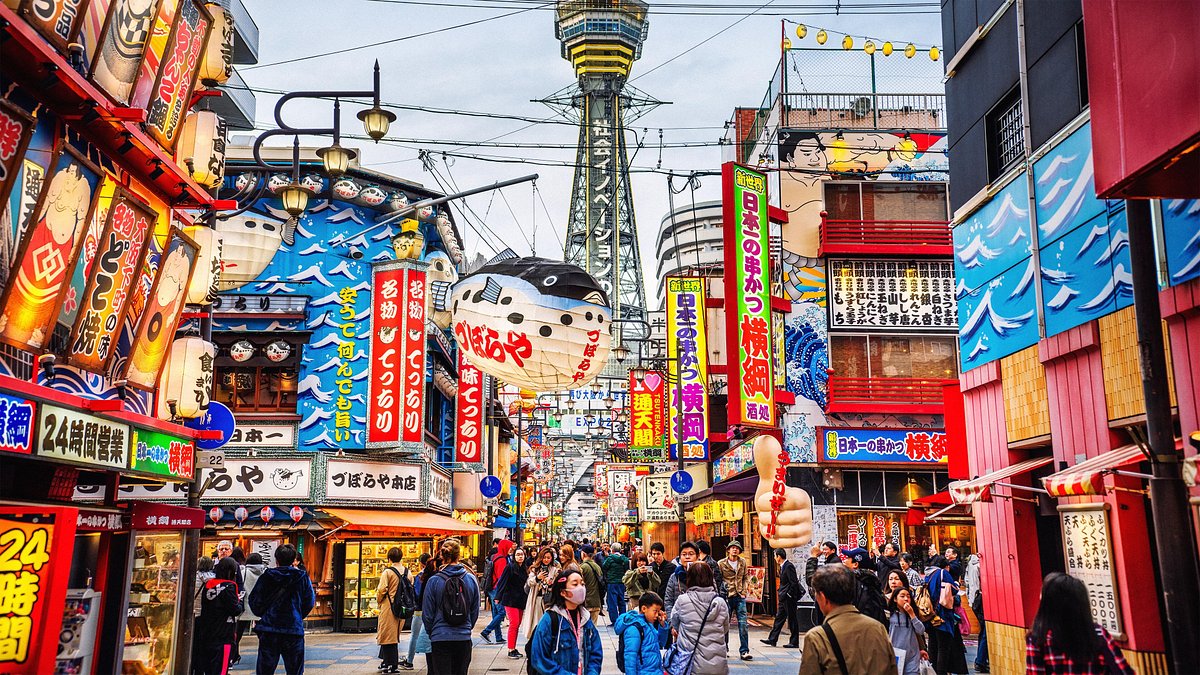
For Visitors
Prior Registrations differ according to locations. Select a location from below.
The Imperial Palace
Kyoto imperial palace, kyoto sento imperial palace, katsura imperial villa, shugakuin imperial villa.
Guided Tour of the Imperial Palace (Free of charge)
Generally conducted twice a day in the morning and in the afternoon.
Morning tour
Afternoon tour, what to bring: a valid form of identification.
Participants will be asked to present a valid form of identification, such as passports, residence cards, or driver’s license. Photocopied IDs are not accepted.
Prior registration
Walk-in Application
- Bring a valid form of identification outside the Kikyo-mon gate of the Imperial Palace.
- Numbered tickets will be distributed one hour prior to the starting time of the tour.
Take one ticket per person. Following the entry at the Kikyo-mon gate, you will be asked to fill in an application form.
No tours are given on the following days and times (calendar)
- National Holidays (except when a holiday falls on a Saturday)
- Afternoons from July 21 to August 31
- From December 28 to January 4
- Any day or time of the day when Imperial Court functions are scheduled or other unavoidable circumstances occur.
Walk-in: 300 persons per tour on a first-come basis; numbered tickets will be issued Prior registration: 200 persons per tour (1 group should not exceed 50 persons ) ※Those under 18 years old must be accompanied by an adult. Groups (less than 10 persons) of junior or senior high school students with applications from their schools may be allowed to participate.
The following persons will not be permitted to participate in the tour or enter the Palace Grounds
- Persons who are heavily drunk and/or behave in ways deemed harmful to others
- Persons deemed to potentially cause discomfort or nuisance to others
- Persons accompanied by animals (excluding assistance dogs for persons with disabilities)
- Persons carrying dangerous articles such as knives, small unmanned aircraft systems, or other objects that may cause harm to other visitors
- Persons deemed to cause a hindrance to the tour
- Kyoto Imperial Palace is open to the public all year round. No prior registration needed.
- Admission is free.
- You and your belongings will be subject to security checks at the entry gate .
Opening hours
Mondays (Tuesday if a holiday falls on a Monday) December 28th to January 4th ※Opening arrangements may be subject to change at short notice due to Imperial Court events or any other operational reasons. →Please check calendar
Free guided tours are scheduled at
- No prior registration needed.
- Meeting point for the tour --- Visitors Room (on the right side of the entry gate)
- Please note that none of the buildings can be entered.
- Karasuma Line, Kyoto City Subway: 5 minutes from Imadegawa Station
- Kyoto City Bus: 5 minutes from Karasuma-Imadegawa bus stop
- Keihan Railway: 20 minutes from Demachiyanagi Station
- Pets and large baggage cannot be taken into the Palace.
- The following acts are not permitted: smoking, drinking alcohol, eating, using megaphone, carrying signboard propaganda, bringing drones or other objects that may harm to other visitors.
- You can take photographs. However, using camera stand or other related equipment for commercial filming are not allowed.
- Wheelchairs are available. Please ask our staff for assistance at the entrance.
- Admission is free.
- Visiting the palace requires joining a Japanese guided tour.
- Audio guide (English, Chinese, French, Korean, and Spanish) is available free of charge.
- Visitors must be 18 years old or older.
Walk in --- On a first-come-first-served basis. Limited availability, with a maximum number of 35 persons for each tour.
Tours are available at 13:30, 14:30 and 15:30. (Duration approximately 60 min.)
- Prior registration(Advance application) →For details, click here
Directions for walk in registration:
- Registration starts at 11:00 AM at the North Gate of Kyoto Sento Imperial Palace.
- Main applicant may add up to 3 accompanying persons. A maximum of 4 persons including the main applicant may apply at one time if there is an opening.
- Full name, passport number, age, gender and nationality of main applicant and accompanying persons are required to register.
- ID for the main applicant is required to register. IDs for all the participants are required at the door when entering.
- Main applicant must apply in person. Proxy application is not acceptable.
- No tours on the following days Mondays (Tuesday if a holiday falls on a Monday) December 28th to January 4th ※Opening arrangements may be subject to change at short notice due to Imperial Court events or any other operational reasons. →Please check calendar
- Karasuma Line, Kyoto City Subway: 15 minutes from Marutamachi Station
- Kyoto City Bus: 10 minutes from Furitsuidai-byoin-mae bus stop
- Keihan Railway: 20 minutes from Jingu-Marutamachi Station
- The following acts are not permitted: smoking, eating, using megaphone, carrying signboard propaganda, bringing drones or other objects that may harm to other visitors.
- Visiting the villa requires joining a Japanese guided tour (duration: one hour)
- Visitors must be at least 12 years old (junior high school age) or older.
Admission fee is charged as follows.
- 18 years old or older ---1,000 yen
- 12 years old - 17 years old ---admission is free
- Visitors who have a physical disability certificate --- admission is free (One attendant who assists the visitor --- admission is free.)
The admission fee will be charged at the reception desk of the villa. The following payment methods are accepted: cash, credit cards, and e-money. → For details, click here.
The admission fee is non-refundable.
- Walk in --- On a first-come-first-served basis. Limited availability, with a maximum number of 20 persons for each tour.
- Tours are available at 9:00, 10:00, 11:00, 12:00, 13:00, 14:00 and 15:00. (Duration approximately 60 min.)
Directions for Walk in registration:
- Registration starts at 8:40 AM at the Katsura Imperial Villa.
- No tours on the following days Mondays (Tuesday if a holiday falls on a Monday) December 28th to January 4th ※Opening arrangements may be subject to change at short notice due to Imperial Court events or any other operational reasons. →Please check calendar
- Hankyu Railway: 20 minute from Katsura Station
- Keihan Kyoto Kotsu Bus: 8 minute from Katsura-rikyu-mae bus stop
- Visiting the villa requires joining a Japanese guided tour.
- Walk in --- On a first-come-first-served basis. Limited availability, with a maximum number of 35 persons for each tour.
- Tours are available at 13:30 and 15:00. (Duration approximately 80 min.)
- Registration starts at 11:00 AM at the Shugakuin Imperial Villa .
- Main applicant may add up to 3 accompanying persons. A maximum of 4 persons including the main applicant may apply at one time
- ID for the main applicant is required to register. IDs for all the participants are required at the door when entering.
- No tours on the following days Mondays (Tuesday if a holiday falls on a Monday) December 28 to January 4 ※Opening arrangements may be subject to change at short notice due to Imperial Court events or any other operational reasons. →Please check calendar
- Eizan Railway: 20 minute from Shugakuin Station
- Kyoto City Bus: 15 minute from Shugakuin-rikyu-michi bus stop

COMMENTS
Visiting the Tokyo Imperial Palace. You can call by the site of the Imperial Palace any time -its perimeter is a popular jogging route and the East Gardens are open to the public year-round. However, to make the most of your visit and get a good historical overview, put on some comfortable shoes and take a walking tour. Check the Imperial ...
The current Imperial Palace (皇居, Kōkyo) is located on the former site of Edo Castle, a large park area surrounded by moats and massive stone walls in the center of Tokyo, a short walk from Tokyo Station.It is the residence of Japan's Imperial Family.. Edo Castle used to be the seat of the Tokugawa shogun who ruled Japan from 1603 until 1867.In 1868, the shogunate was overthrown, and the ...
If you plan on joining the Imperial Palace tour, meet your guide at the Kikyomon Gate, a 10-minute walk from Nijubashimae Station or Otemachi Station. The center of the new capital For around 1000 years Kyoto was the capital of Japan, but in 1868 both the capital and Imperial Palace were moved to Tokyo after the Meiji Restoration.
Tokyo Imperial Palace tours are free but require registration, either in advance online or on the day. Currently, only 120 guests are accepted each day (previously 500), with 70 spaces available for on-the-day registration (previously 300), with reccommendations to arrive early if you can.
14,784 reviews. Home to Japan's Emperor, the Tokyo Imperial Palace occupies the site of the original Edo Castle (Edo-jō), the Tokugawa shogunate's castle, which was once the largest fortress in the world. Located in the center of Tokyo, the palace is surrounded by moats and serene gardens. Learn more. 1-1 Chiyoda, Chiyoda, Tokyo, 100-8111.
The Imperial Palace has served as the residential place of the successive Emperors since 1868. It contains the Imperial Residence and the Imperial Palace Complex, where His Majesty the Emperor undertakes official duties. Various ceremonies and public activities are held there too. Other major buildings in the Palace include the building of the ...
The Emperor of Japan, one of the most revered symbols of Japan, resides in the Tokyo Imperial Palace. This is one of the tourist attractions with the largest number of visitors in the world. Built over 400 years ago, the Tokyo Imperial Palace is adorned with flowers all year round, with many natural and green spaces, and there are numerous sights to see within. All these are free for the ...
Tokyo: Imperial Palace History Walking Tour. 4.8 / 5 115 reviews. Activity provider: Sunrise Adventure. Add to wishlist. View all 22 images. 1 / 22. Join a local guide on a historic walking tour through the remains of the old-era Imperial Palace in Tokyo. Enjoy the peaceful gardens while getting to know how Japan became the country it is today.
Tokyo: Full-Day Sightseeing Bus Tour. Discover 18 Tokyo must-see places and activities on the deluxe coach in 1day. On this tour, be taken to the most famous places in Tokyo such as Meiji Shrine, Asakusa, and Imperial Palace. Enjoy popular activities such as going up to the 350-meter observatory at the Tokyo Sky Tree, drinking matcha, and even ...
On this epic day tour, see all the highlights of the Imperial Palace with the help of a national-licensed guide at your side. Get to wander around the Kokyo Gaien plaza, explore the beautiful East Gardens, and catch sight of the Nijubashi and Meganebashi bridges from a distance. Your guide will be taking you through all the important publicly ...
Rail Tours. from. $398.41. per group (up to 6) The area. 1-1 Chiyoda, Chiyoda 100-8111 Tokyo Prefecture. Neighborhood: Ginza / Tokyo Nihonbashi. Ginza is famous for being a trendy hotspot, but it's also a downtown area with shops that were founded over a hundred years ago. Department stores and luxury boutiques line the route from Nihonbashi to ...
Guided Tour of the Imperial Palace (Free of charge) ... Imperial Household Agency, Tokyo 100-8111,Japan. ・Send the list of all applicants by e-mail to the address indicated on the format. ・Application must be completed by seven days prior to the tour date. ・Once the application has been accepted, no changes may be made to the date and ...
The Imperial Palace; Kyoto Imperial Palace; Kyoto Sento Imperial Palace; Katsura Imperial Villa; Shugakuin Imperial Villa; Application for Visit
16 March 2018. Since March 2018, the Imperial Household Agency organises free tours of the inner palace grounds in English. Previously this was only available in Japanese or you needed to download an app if you wanted to hear explanation in English. The tour takes you close to several buildings of the palace and former Edo Castle, while ...
Perhaps somewhat surprisingly, the Imperial Palace itself is—whilst an impressive structure—maybe not what many are expecting. The main building that faces the plaza is called Chowaden (長和殿) a 160-meter long structure with a 100-meter balcony. The balcony is a lot lower than the television images and newspaper photographs have many ...
Just ten minutes from Tokyo Station lies Tokyo Imperial Palace: a wealth of gardens and galleries, with guided tours and castle ruins.If you're planning to v...
The Imperial Palace, with its moats and gardens, covers a massive 280 acres in the center of Chiyoda City, a district in the middle of Tokyo. We arrived at the parking lot outside the Kikyo-mon Gate by 9 a.m. and received a numbered ticket (#56) for the morning's free tour. Due to work schedules, our only opportunity to see the palace grounds ...
Your tour will center around the Nihonbashi area and the neighboring Imperial Palace Gardens - an area that had flourished into a mercantile center even before Japan's capital was officially relocated from Kyoto to Tokyo in 1868. Please note: This tour visits the Imperial Palace East Gardens on the days they are open to the public.
-This is a Walking & Photo Tour where a guide will take photos and videos of you while exploring the high-rise buildings near Tokyo Station and the Imperial Palace. -It's a short tour that covers the areas around Tokyo Station and Ginza Station, allowing you to efficiently visit Tokyo's photo spots.
This free tour experience promises to leave you with a profound appreciation for Tokyo's heritage, where every step tells a story, and every corner holds a piece of history. Unlock Tokyo's Imperial Palace secrets with an informative guide. Enjoy engaging insights and local tips for an authentic free walking tour experience.
The East Gardens of the Imperial Palace are located on the eastern part of the palace grounds and opened to the public. The Imperial Palace occupies the main part of former Edo Castle. The castle, first created in the mid-15th century, was massively enlarged at the turn of the 17th century by Tokugawa Ieyasu, the founder of the Tokugawa Shogunate.
You can visit the Imperial Palace East Garden from Otemachi Subway Station within a 10 minutes walk. If you prefer to use the JR line, you can stop at Tokyo station and take a 10 to 15 minutes walk to the Imperial Palace Area. Location. Imperial Palace East Garden (map) Schedule. 09.00 - 16.30.
When the number is clicked , the photograph is displayed. Access to Departure Point (Kikyo-mon Gate) from subway Chiyoda Line Nijubashi-mae Station (Exit 6): 10-minute walk. from subway Mita Line Otemachi Station (Exit D2): 10-minute walk. from JR Line Tokyo Station (Marunouchi Central Exit): 15-minute walk.
Tokyo Imperial Palace 7:07 am; Shinkansen ticket change 7:06 am; Sky Accesd 7:06 am; Shinkansen Tickets need to reserve? 6:58 am; Itinerary help - more time in Kyoto vs Tokyo, other question 6:52 am; 11.5 hour layover 6:46 am; Yonezawa Onsen 6:13 am; Tokyo Disney v Hotel in Shinjuku 6:00 am; Is the robot restaurant gone? 5:54 am; e-sim or ...
The Imperial Palace. Guided Tour of the Imperial Palace (Free of charge) Generally conducted twice a day in the morning and in the afternoon. Prior Registration. Morning tour 9:00 am Numbered tickets will be distributed 9:30 am Registration starts 10:00 am Tour starts 11:15 am Tour ends. Afternoon tour